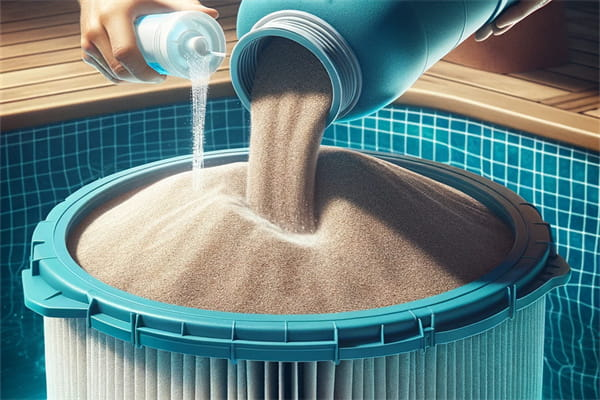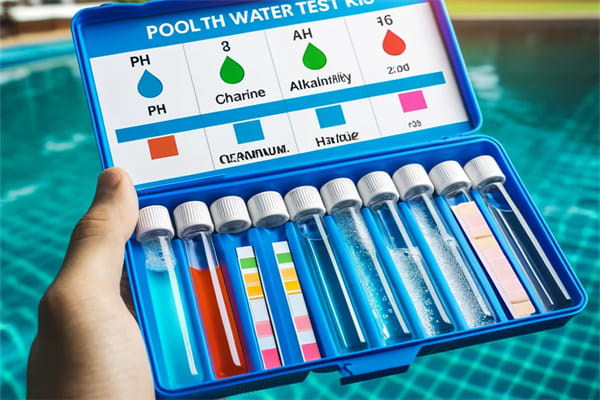A pool sand filter is a crucial component in maintaining clean and clear pool water. With proper care and maintenance, you can extend the life of your sand filter, ensuring it operates efficiently for many years. In this blog post, we will share some essential tips to help you maximize the lifespan of your pool sand filter.

1. Perform Regular Backwashing
Backwashing is the process of cleaning the filter by reversing the flow of water to flush out trapped debris. Regular backwashing prevents clogging and maintains the filter’s efficiency. Here’s how you can do it:
Frequency: Backwash your filter every 1-2 weeks or when the pressure gauge indicates a rise of 8-10 PSI over the normal operating pressure.
Procedure: Turn off the pump, set the filter valve to “Backwash,” turn the pump back on, and let it run for 2-3 minutes or until the water in the sight glass is clear.
2. Deep Clean the Filter Sand
Even with regular backwashing, fine particles can accumulate in the sand over time, reducing its effectiveness. Deep cleaning the sand filter once or twice a year helps remove these particles and rejuvenates the sand. Follow these steps:
Turn off the pump and release the pressure.
Remove the filter head and pour a filter cleaner or degreaser into the sand.
Let it soak according to the manufacturer’s instructions, then backwash to remove the cleaner and debris.
3. Maintain Proper Water Chemistry
Balanced pool water chemistry is essential for the longevity of your sand filter. Unbalanced water can lead to scaling, corrosion, and other issues that affect the filter’s performance. Regularly test and adjust:
pH Levels: Maintain a pH between 7.2 and 7.6.
Chlorine Levels: Keep chlorine levels between 1-3 ppm.
Total Alkalinity: Maintain levels between 80-120 ppm.
Calcium Hardness: Keep levels between 200-400 ppm.

4. Avoid Overloading the Filter
Avoid running your filter excessively or filtering large debris that can cause blockages. Use a pool skimmer to remove leaves, insects, and other large debris before they reach the filter. Also, clean the pump basket regularly to prevent debris from entering the filter.
5. Check and Replace Sand
The sand in your filter will eventually wear out and become less effective. Typically, sand should be replaced every 5-7 years, depending on usage and maintenance. Signs that it’s time to replace the sand include:
Increased pressure on the filter gauge that isn’t resolved by backwashing.
Cloudy pool water despite regular maintenance.
Short backwashing cycles where the pressure rises quickly after backwashing.
6. Inspect and Maintain Filter Components
Regularly inspect the components of your sand filter system, including:
Filter tank: Check for cracks or leaks.
Valves and O-rings: Ensure they are in good condition and replace if necessary.
Pressure gauge: Make sure it’s functioning correctly and replace if faulty.
7. Winterize Your Filter
If you live in a region with cold winters, proper winterization is essential to prevent damage from freezing temperatures:
Drain the filter completely and remove any remaining water.
Store the filter indoors if possible or cover it with a weatherproof cover.
Remove and store any removable parts like the pressure gauge and valves.
Conclusion
By following these tips, you can extend the life of your pool sand filter and ensure it continues to keep your pool water clean and clear. Regular maintenance, proper usage, and timely replacements are key to maximizing the efficiency and lifespan of your sand filter. With a well-maintained filter, you’ll enjoy a sparkling clean pool for many seasons to come.
Maintaining your pool sand filter doesn’t have to be a daunting task. By integrating these practices into your regular pool care routine, you can prevent common issues and prolong the life of your equipment. Remember, a little effort goes a long way in keeping your pool in top shape, ensuring you have more time to relax and enjoy your swim.